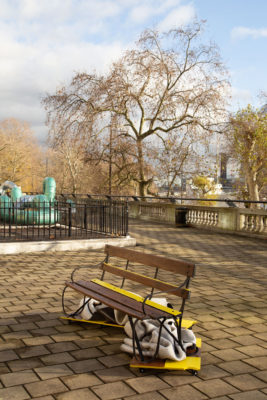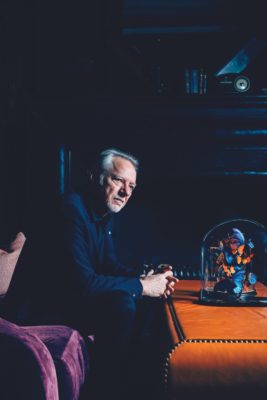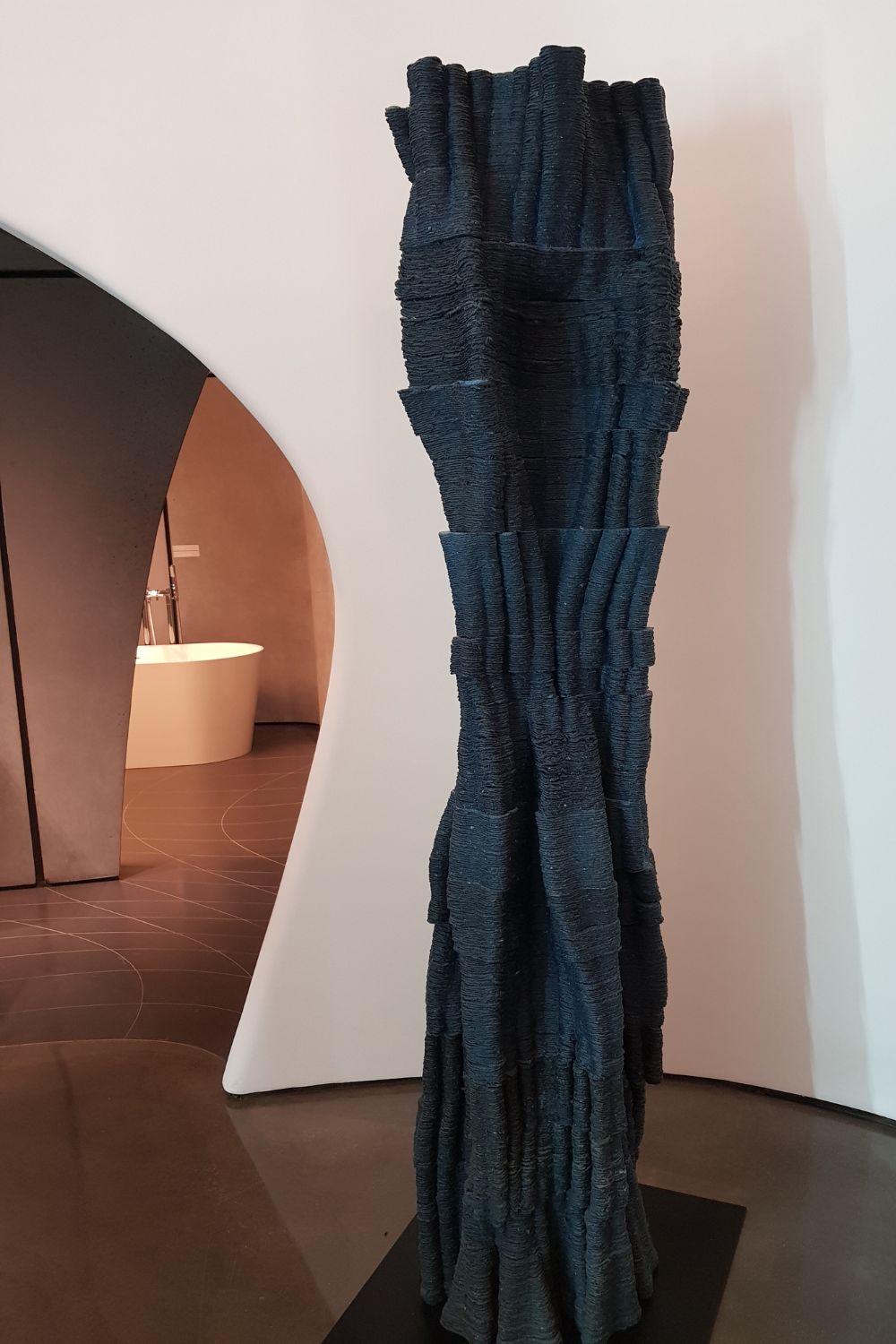
Inside The Regenerative, Resilient Futures Exhibition At The Roca Gallery
By
12 months ago
Biophilia takes centre stage
Wendyrosie Scott reflects on everything that the Roca Gallery’s Regenerative, Resilient Futures exhibition has to offer.
Review: The Regenerative, Resilient Futures Exhibition At The Roca Gallery
With endless exhibitions in London, choosing from this treasure is perplexing. Allow me, then, to recommend a gem: the Regenerative, Resilient Futures at the architecturally spectacular Roca Gallery. This progressive exploration spotlights the miracle that is biophilia and the mutual benefits which emerge from combining considered design and ecology. Both disciplines are ripe with solutions to help heal the planet beautifully. Win, win. So let’s get to it: what precisely is it – and is it a load of bio?
Noted as an experiential, multi-sensory exhibition aimed at encouraging a more nature-based approach to design, it intrigues throughout. It presents with certainty and clarity the need for a reciprocal relationship with the living systems around us, while signifying the pertinence of embracing ‘nature’ to create solutions in lifestyle. Visitors are guided through easy to decipher ‘islands’, each a revelation and lesson in environmentalism. For starters, here are a few topical terms: biophilia refers to humankind’s innate affinity for nature; biomorphism imitates natural forms and structures; and biomimetic design mimics biological processes.
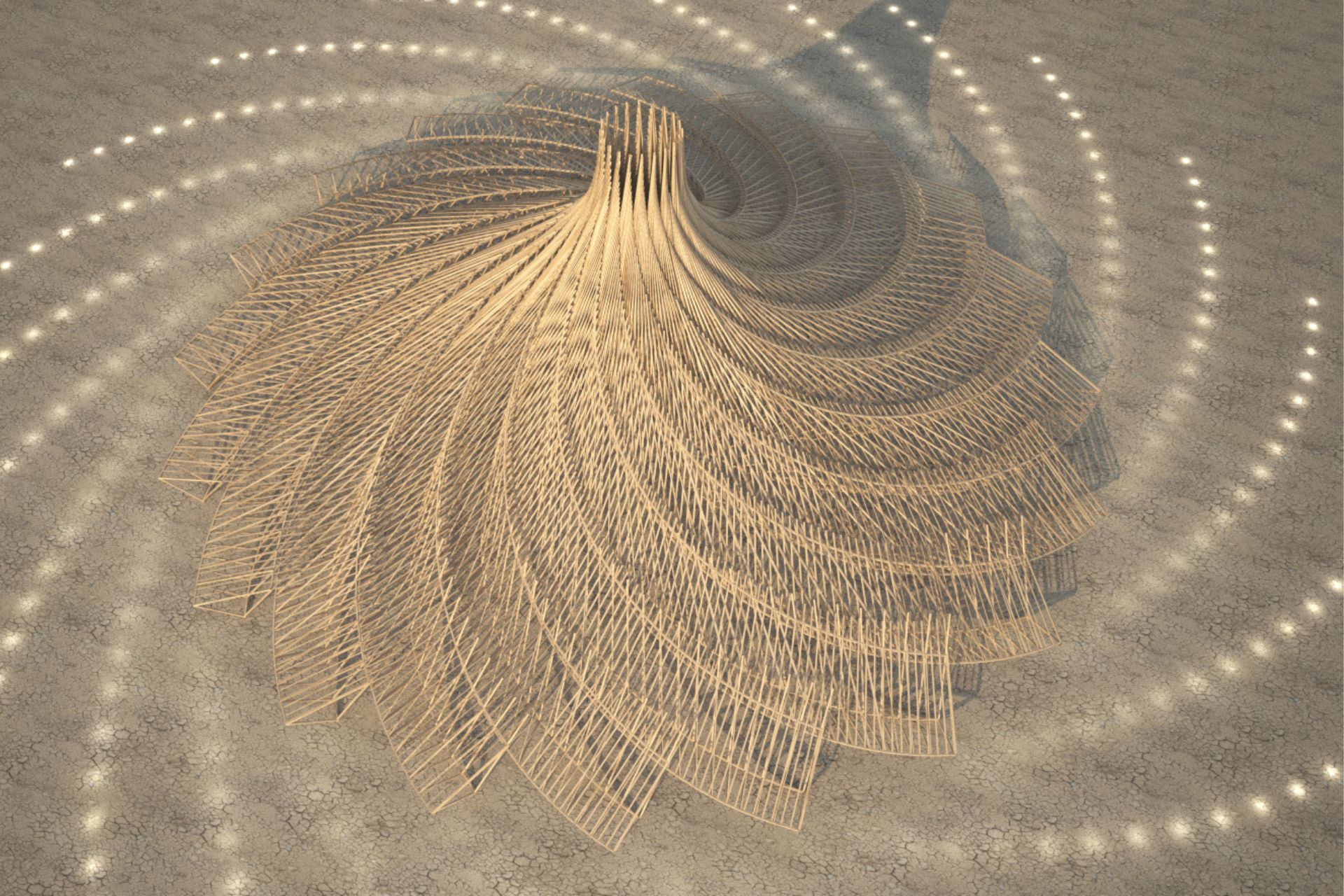
Temple Galaxia by Mamou-Mani, 2018
With more than a touch of space-age showmanship and sensibility, there’s plenty to entice and excite, such as the resplendent Cocoon Vase, the first 3D light made from sawdust (Hagen, Hinderdael & ForustTM) or the charming Lily Table by Exploration Architecture, made from potato starch and inspired by Amazonian water lilies. Bringing the ‘primitive’ past into the future is the achingly beautiful Mario Cucinella Architects’ TECLA house, created from 3D-printed clay and inspired by the potter wasp (who builds nests out of mud). There is also Moss Art by Verti-Grow, which blissfully translates the appealing and ecologically abundant properties of this medium. Not forgetting the magical Blue Tree from Blast Studios that acts as an artistic haven for insects with panache and an eye for a stylish abode.
Continuing on the tree theme comes Full Grown‘s frankly unbelievable chair, all the more real as it’s presented on video format showing how it was grown and then ‘encouraged’ into a malleable shape. It’s surely the most organic of all and formed by using trees as both printer and material, in situ, over many years. It is mind-blowing.
There are well-known names and examples in the exhibition such as Thomas Heatherwick’s healing and appealing architectural masterwork Maggies Cancer Help Centre in Yorkshire. You’ll also spot Mamou-Mani’s digitally-designed and fabricated architectural splendour entitled Galaxia, which utilises botanical genetic coding to create awe-inspiring forms, including the 2018 Temple, designed to be consumed by fire at the final night of the infamous Burning Man Festival of the same year (having attended the festival myself, the sense of awe and spirituality that results from what seems like a senseless act is profound). Then there’s progressive fashion brand LESTRANGE, who commissioned Oliver Heath Design Studio to create biophilic guidelines to deliver a more nature-based, regenerative approach to their retail space, to ‘bring consumption back in line with the planet’.
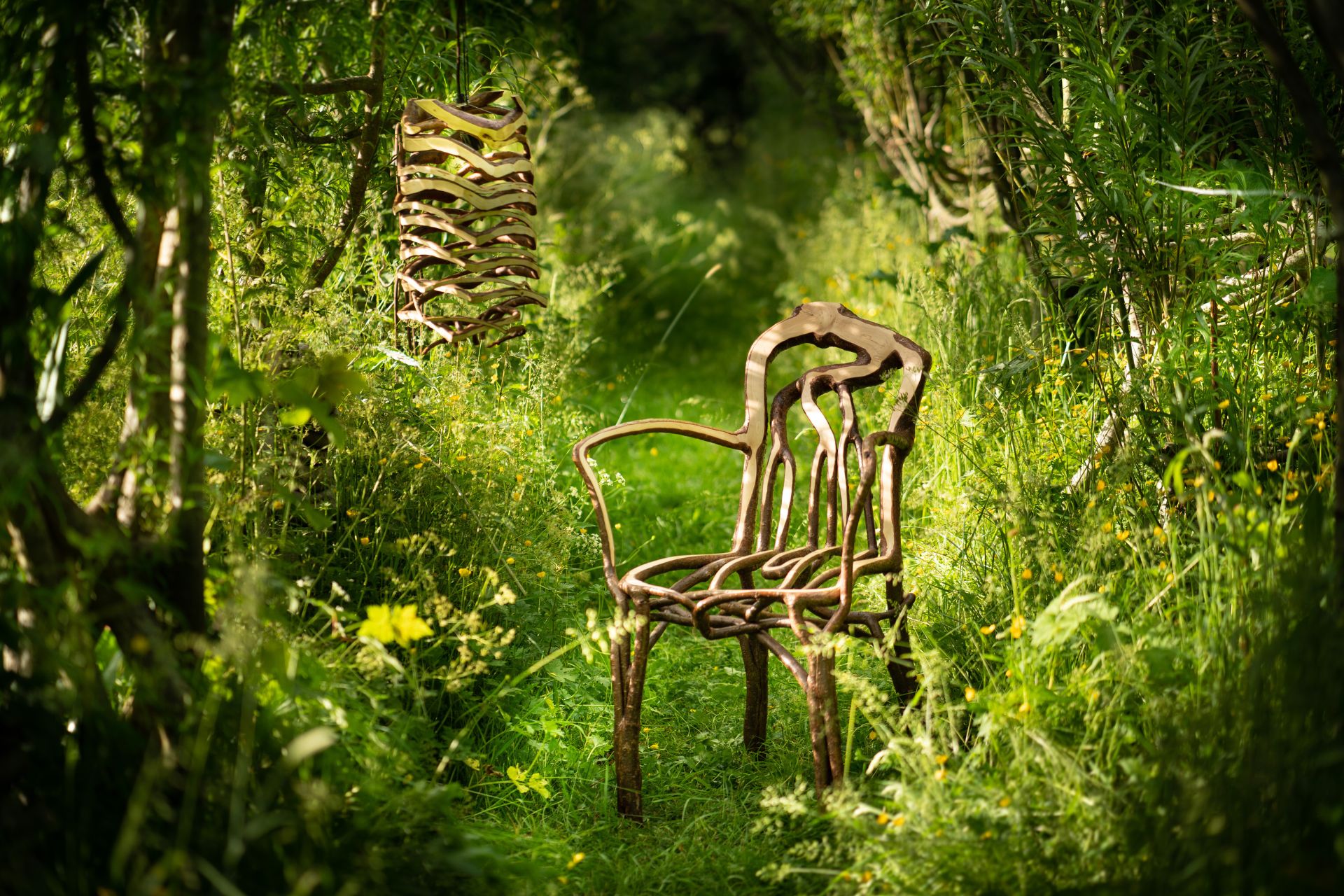
Chris Webb
The exhibition also provides exciting examples of (bio) alternatives with materials derived from and inspired by nature. Notedly, there is a conscious shift away from utilising the overused term ‘sustainable‘ – because ultimately, what are we sustaining? Cue bio-regenerative design, an emerging practice whose resonance has future relevance and which places emphasis on adaptability, restoration, mitigation and repair. The Phoenix Project is a fascinating example, with their large scale brownfield regenerative development in Lewes by Human Nature, which is intended for neighbourhood housing.
The show is curated by Planted and their biophilic design ambassadors, along with world-renowned experts on nature-based design at Oliver Heath Studios. ‘As a species, we are waking up to the simple fact that we are part of nature,’ states Heath. He adds: ‘Human beings thrive in spaces that are in harmony with the natural elements and systems of our planet.’ Naturally!
I first met Heath well over a decade ago, having approached him when I was writing about eco-design – then in its infancy. Heath’s authenticity and prescience cut through certain pseudo aspects of design, with an ethos which chimed with mine. At the time, he was one of the few pursuing an area regarded as niche. His vision then as now, is intent on sharing his optimistic findings. Without a doubt, biophilia is set to become a fixture with a powerful impact and will be applied to many realms, because in no small part, at its heart, it’s healing.
After attending most of Planted’s accompanying talks which took place within the gallery – ‘Reimagining Architecture: What If Nature Designed Our Cities’ was a breakthrough discussion with Grimshaw’s, Camila Rock, acting Project Lead for the proposed Morecombe Eden Project, and also Sonja Stockmarr from Henning Larsen. Each is from companies with significant bio credentials well-represented here, while the strong and innate female understanding of this area saw the triumvirate completed by Planted’s Deborah Spencer. Best known for founding the groundbreaking Design-Junction show in 2011, her dedication and insight has been applied to an area that clearly fires her up, as she states: ‘We want visitors to come away from the exhibition with an understanding of how to apply a more nature-based approach to design.’ Job done.
Distinctly, the show leans toward an understated harmony – a smart move, showcasing the beauty and efficacy of simplicity. Equally, it embraces the sometimes incomprehensible splendour of nature, with its overwhelmingly pleasing aesthetic and unmatched systems of knowledge. It is housed in the organic style architecture of the Roca space, whose sinuous curves envelop the presentation with ease. It magnetises and envelops the viewer dutifully. The building was created cooperatively, in consultation with the gallery, and designed by revered architect Zaha Hadid, whose signature creations ripple like a rollercoaster (minus the nausea!); evidently Roca is inspired by water. Loaded with uplifting and cosseting benefits, Hadid’s creations are inherently and consistently people-centred, overtly pleasing and nurturing. As a woman architect in a mostly male-dominated profession frequently fuelled by ego, her female sensibility shines on, despite the world’s sad loss that she is no longer with us. But what a legacy.
The exhibition sits so perfectly, in-fitting with its environment, that it’s a shame it’s not permanent. There’s a sense of timelessness to its cohesive collection and innovative notions on lifestyle which balance seemingly simple solutions with the advanced and experimental. Taking a holistic approach to the mental, cultural, spiritual and physical welfare of all the planet’s inhabitants is evidential and urgent. We witness positive strands of progress daily, which reveal that, together, we can be the change needed to build a better planet. By presenting attainable alternatives and solutions, perfectly peppered with considered art and craft solutions, this is a compelling exhibition with a wry eye, which cleverly combats climate fatigue, delivering an elemental and unmissable presentation.
Find out more at rocalondongallery.com



